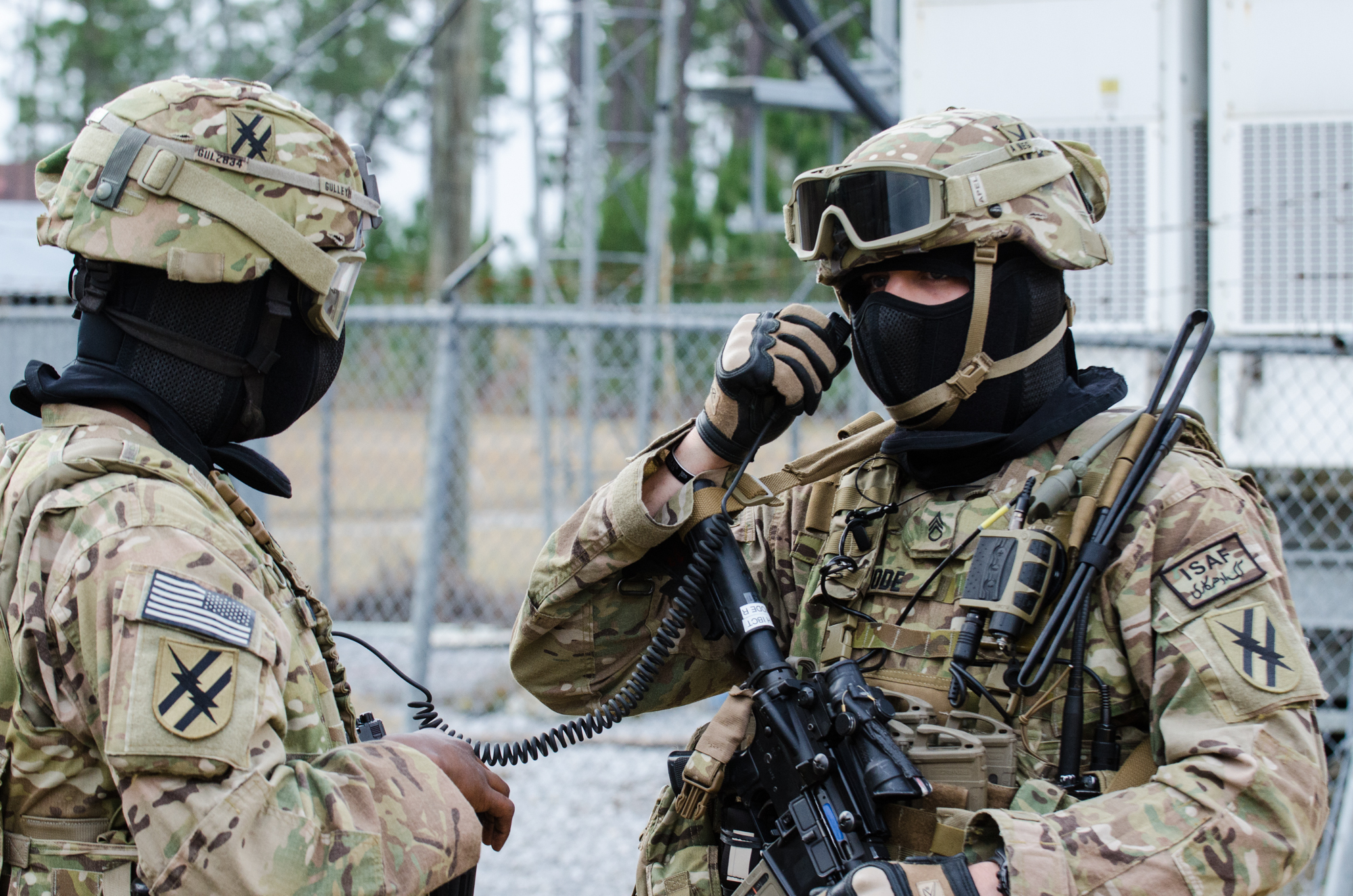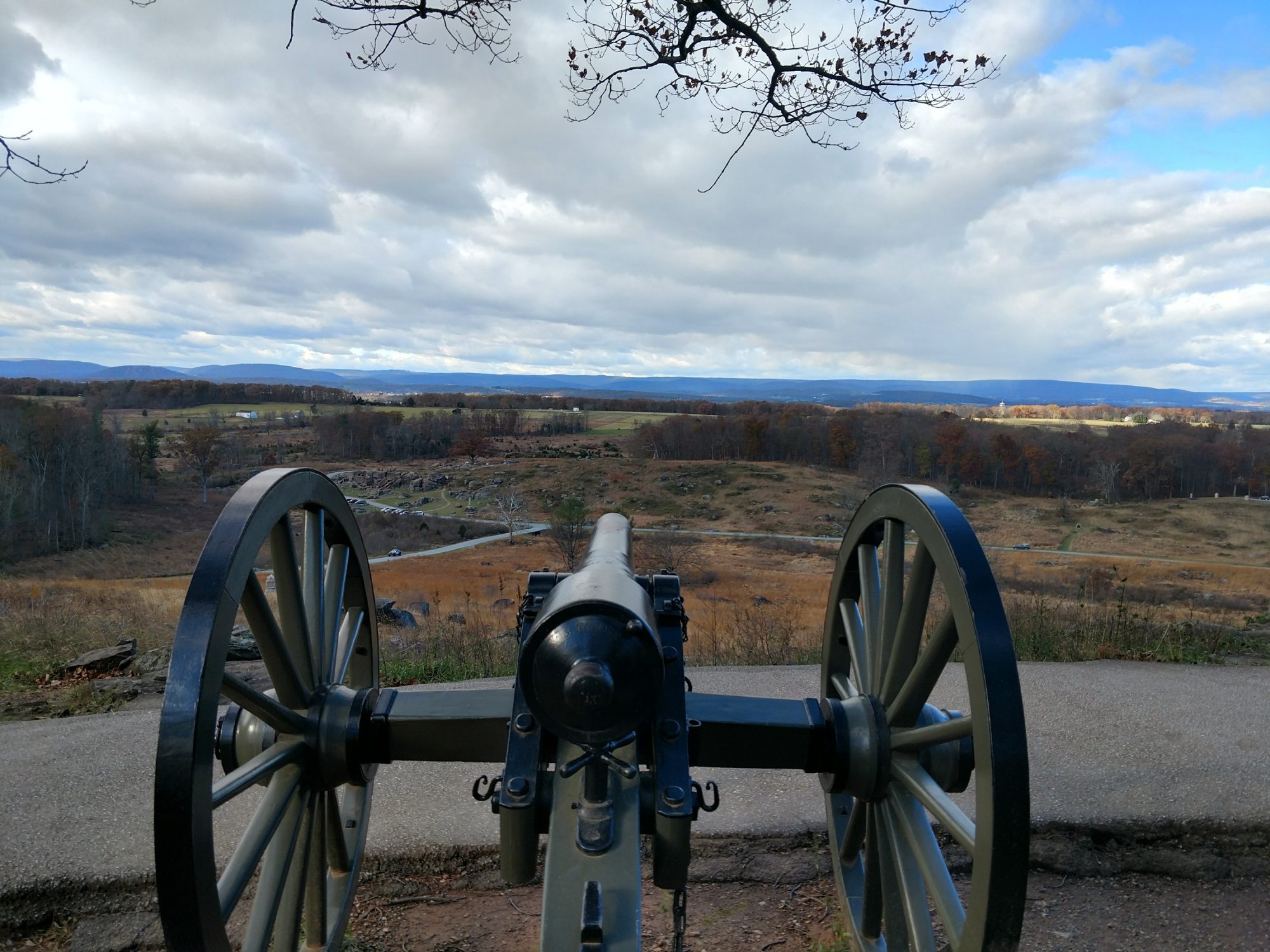
“It’s a system that’s designed for the Active Component, so we just have to work around that.”
Raise your hand if you’re a Reserve Component (Army National Guard or Army Reserve) soldier who’s heard that over the course of your career. Whether it’s an online portal for accessing records or the way that we dispatch vehicles (Army-speak for a soldier doing the paperwork necessary to drive a vehicle over drill weekend), nearly everything we do is geared for the Active Component (AC). Which, you know, makes sense. They are, after all, the ones who do this full time. And yet…
A Shift to the Electronic
The age of greater information technology innovation has seen dynamic changes in the way that the Army conducts logistics, personnel, and training operations. In the post-Cold War environment, the Army has moved towards more automation, more online systems of record (which are supposed to talk to each other – key word: supposed to), and to more centralized functions – i.e., one or two systems that govern multiple aspects of Army life.
Now, this – on paper – reads well. It also briefs well. After all, who wants to be the person to say that the “Global Combat System Support-Army” (GCSS-A) – designed to streamline logistics and personnel operations across all components regardless of geographic location – is actually an IT nightmare that requires a larger full-time force for the RC in order to actually keep enough people current and trained in the system. Or that – because it also replaced the former vehicle licensing tracking system (also not optimal) – RC units would suddenly find that they had no licensed operators for their equipment. However, even with systems such as GCSS-A, one can see the point of the desire to streamline efforts. And someday, it will make logistics operations easier – even though it’s now been four years since its roll-out and we’re still experiencing backlogs and frustrations.
Enhanced Training Requirements
Why do I bring up GCSS-A? Because it is simply one of many online systems now used by the Army that put undue requirements on the RC.
A National Guard commander has one weekend a month and two weeks or so in the summer to train her or his troops. And to train them to be on a level of proficiency just under or on par to their AC counterparts. In the world of near-peer competitors and high intensity conflict, this means training to shoot, move, communicate, protect, and medicate. It means tactical care under fire, it means battle drills, gunnery tables, tactical communications, chemical weapons protective drills, and the mission essential tasks that the Army has given that company. It means training in the field, with realistic simulations and simunitions that stress soldiers and leaders to get them as close to actual combat as they can.
It means doing everything possible so that company commander can look to the Army and say that her or his company can fulfill their mission; while simultaneously being able to tell the parents, spouses, and children of their soldiers that their loved ones have received the best possible training that can be provided one weekend a month and two weeks in the summer in order to bring as many of them home safely as possible.
And the Army has admitted that this has to be the priority, going so far as to begin a new training management system called Objective T. It is meant to provide a more realistic and rigorous assessment of training. And that it definitely does. It forces us as leaders to provide a clear-eyed assessment of where we’re at through strict criteria. I say this begrudgingly, as it has wide-reaching effects for the RC. Simply put, we cannot meet most of these requirements because they are significantly personnel-based metrics, with the highest levels of training proficiency reserved for formations with nearly 100% of their leaders and soldiers present. In the RC, where our soldiers have lives, jobs, and commitments outside the Army, this is a problem.
Unsurprisingly, employers – while mostly being supportive of their citizen-soldiers – don’t love it when they lose one of their employees for two weeks for annual training and then another two weeks for a professional military education school. While the goal is to get soldiers to attend annual training – the unit’s big training event for the year – and go to school, sometimes it just can’t happen. Either because of funding for paying soldiers or because of soldiers’ own lives. This has been a constant for the RC since 1916 when the National Guard was brought onto the same training standards as the AC. It is the price of having a citizen-soldier force. And with Objective T in place, that price is very visible when it comes to training metrics. The recruiting issue doesn’t help, although with that being Army-wide, I would say that all units are beginning to face the struggles of the RC when it comes to having a high percentage of soldiers and leaders present for training.
Systems Access
So, what does this have to do with online systems? Objective T requires dynamic training events with multiple operational environment variables (Army lingo for things like facing threats from the air, ground, chemical weapons, while also dealing with a hostile local populace, etc). These events have to be planned, resourced, assessed, and evaluated – using the Army’s Digital Training Management System (DTMS). If it doesn’t get logged into DTMS, it didn’t happen. Leaders must fill out the training and evaluation outlines for each task, ensuring it was trained during day, night, and CBRN environments. Soldiers need to sign rosters that said that they attended training. These – as well as the training plans – need to be uploaded into DTMS. Along with gunnery results, fitness tests, risk assessments, after action reviews…the list goes on and on.
Not to mention that in order for soldiers to be considered “ready,” they have to have completed a gamut of online assessments and training, ranging from online physical health assessments to cyber awareness training. In fact, if this latter is not trained annually, soldiers lose their ability to log onto a government computer. Hang on to that thought, because it’s about to become incredibly important.
So, now you know that in order to be resourced, equipped, manned, and trained, RC soldiers rely on a myriad of digital systems. Here’s the kicker: out of the, say, average of 110 soldiers in any given unit, 3-4 of them will have a government laptop. Those are the full time unit staff, who – on any drill weekend – are usually using those laptops for doing their jobs. Which leaves either one or two laptops or a few computers supplied by state for literally everyone else. Sometimes the commander, first sergeant, and executive officer might even be loaned computers, depending on the state. For the remainder, they have to rely on what is left. And to access these computers, they need to log on to them every thirty days or they lose access, requiring them to request access again from the few overworked soldiers who work at the state help desk.
This used to be a simple matter of simply having soldiers bring their personal laptops to drill, or completing the training at home. But as of this past year, the Army has begun restricting some systems access to only government computers. Which means that what was once simple is now complicated. What once took only a few minutes now takes hours. And those hours add up.
And to track all these requirements, full time staff in the RC are increasingly turning to digital networks for knowledge sharing: SharePoint, Guard Knowledge Online, and shared network files. These all exist behind common access card (CAC) login walls and require a government system to have access to them. We are thus placing a self-imposed barrier between our full time staff and the rest of the force. In effect, hiding knowledge from the people who need it most.
Evaluating “Readiness”
At the end of the day, what all this means, is that instead of receiving the dynamic training that the Army requires of us, precious hours are spent trying to get 110 soldiers to digitally sign their clothing records every time something new is added to their clothing record, take cyber awareness training, fill out their periodic health assessments, or any number of other digital requirements that can only be done on a government computer – all with a throughput of only a few laptops. All of these things have to be done in order to ensure a “ready” soldier.
So, we devote about five out of our twelve training months to being primarily administrative drills. That leaves seven to train on our actual missions. Just about twenty-one days a year to try to become proficient at shooting, moving, and communicating under fire, in an environment where our technological edge is swiftly vanishing. That’s not a lot.
Which brings me to the Army Combat Fitness Test (ACFT). This is due to replace the Army Physical Fitness Test (APFT) in 2020. Now, the APFT consists of two minutes of pushups, two minutes of sit-ups, and a two mile run. It can be trained for literally anywhere; can be conducted almost anywhere; and requires minimal equipment, training, and manpower.
The ACFT consists of six events, requires access to pull-up bars, medicine balls, a specially designed sled (that can only be dragged over grass or AstroTurf), kettle bells, a hex bar with weights, and still requires a two mile run course. In addition, it can only be administered by soldiers who are Level 1 ACFT qualified. It requires graders at each station. The deadlift station may only have up to five soldiers in it. On the positive side, it is no longer graded on an age or gender scale. Instead, the requirements are based on military occupational specialty, with light, intermediate, and heavy categories.
It is clear that this test requires soldiers to put in a lot more training prior to execution if they are to pass the test and avoid injuries. Most RC soldiers work jobs that are time intensive and do not leave a lot of time for physical fitness beyond body weight exercises and cardio. Many communities are rural, with minimal access to gyms. Similarly, not every soldier can get to an armory during the duty day to train; full time unit staff cannot be expected to remain after hours to ensure that armories are open for training. Training for the test will thus be a significant challenge for most of the force.
Meanwhile, the RC is slowly fielding the equipment needed for the test. Some units are being told to order equipment; others are being told to hold off. Each subordinate command is left trying to figure out how to get enough equipment to realistically run the ACFT without it taking all day long. The most realistic situation is that each armory receives enough equipment to train for the ACFT and that the owning battalion has a full set which the units can sign out when it comes to their testing. Even then, units with detachments will have a hard time getting a training set out to their detachments, which are often hours away from the main body.
The first concern is, of course, injuries. Improper or no training would result in injuries to the force because of improper form or simply because of ignorance of the exercises being performed. Therefore, we need to find a way to get soldiers the time, equipment, and resources to properly train for the ACFT. As of now, the Army is providing no way forward for RC units.
The next concern is the implementation of the test. The APFT is administered annually and takes the better part of the morning to run a company through. Right now, units can run an APFT in almost any weather – provided they have access to an indoor track for when there’s snow and ice covering everything. And it is important that we can do this, because in addition to the annual APFT requirement, RC soldiers are required to take one before leaving for an Army school. Additionally, most units run one every drill for those who have failed the annual test in order to get them in compliance. Some units also administer one for new soldiers to the unit.
Come 2020, the ACFT is going to begin eating into training time because soldiers will need to train on it before it is administered. Units will have to stagger their ACFT dates so as to allow for the transfer of equipment around the force. The ACFT will require around a platoon’s worth of people to grade and administer each event – who will all need to be certified Level 1 ACFT trainers. It can realistically only be conducted in the summer months for areas in northern climes, because of the requirement that the sled be dragged over grass or AstroTurf. And it will most likely take one training day to conduct.
This simply drives a myriad of questions – questions thus far without any answers. What happens if a soldier in a heavy MOS fails the requirements for heavy but passes the intermediate? Are they then flagged? Reclassed if they just can’t pass? What about the requirements for an ACFT prior to Army schools? All questions that we will need to find answers for – answers that do not cut further into the constrained timelines of RC units.
Currently, the ACFT is in the field testing stage to see the impact on the force. I’ve named a few; more will arise as the test is fielded through 2019 and then implemented in October of 2020. One serious consideration for the RC is that many soldiers who are too old or broken will be forced out. “Well that’s good,” one might say. “We don’t need them around.” Sure, not in combat elements. But in combat support units like engineers, these individuals bring with them equipment operation knowledge that the AC could only dream of. Senior NCOs who are superlative instructors and mentors but who are not PT studs could be facing the door, precisely at the time when we need that type of knowledge within the force.
Simply put, physical fitness is not the be-all and end-all for military personnel. If the strength of our Army is in its people, then we should perhaps consider that a CrossFit-style test is not an optimal replacement for a test that was useful in its simplicity. For a “fight tonight” Army, a time, personnel, and equipment intensive physical fitness test seems like a poor idea. That said, it is incumbent upon us as leaders to find a way to make it work. We would be poor leaders if we did not go into it with eyes wide open as to the challenges presented for the RC.
Taken together, systems access, training management, and the ACFT present major obstacles to the Reserve Component’s ability to be a trained and ready force. So much time and effort is put into ensuring that the formal procedures are observed that it endangers the true readiness of the force: to be able to deploy quickly, fight in an environment where we may be overmatched, and adapt to quickly changing battlefield environments. In the current mode where everything is a priority, nothing is a priority. And readiness suffers as more and more systems are put into place that do not consider the impact on the part-time force that has sustained modern combat operations from World War I to the present day.
Can there be a middle ground? A compromise? Only if those at the top are willing to consider making changes to take some of the procedural burdens off of RC units. In order to field a unified Army to project power, we need to acknowledge the differences in the components and work towards the strengths of each.
Enjoy what you just read? Please share on social media or email utilizing the buttons below.
About the Author: Angry Staff Officer is an Army engineer officer who is adrift in a sea of doctrine and staff operations and uses writing as a means to retain his sanity. He also collaborates on a podcast with Adin Dobkin entitled War Stories, which examines key moments in the history of warfare. Support this blog’s Patreon here.
Cover Photo: U.S. Army Staff Sgt. Robert Mode, right, with the 48th Infantry Brigade Combat Team, Georgia Army National Guard, coordinates radio traffic for a key leader engagement at the Camp Shelby Joint Forces Training Center in Miss., Dec. 17, 2013. Source: http://www.defenseimagery.mil/imageRetrieve.action?guid=d4629298a8f71997ca1866832ab7c0ef217ff91f&t=2
Author: Capt. Michael Thompson




One Reply to “”
Comments are closed.